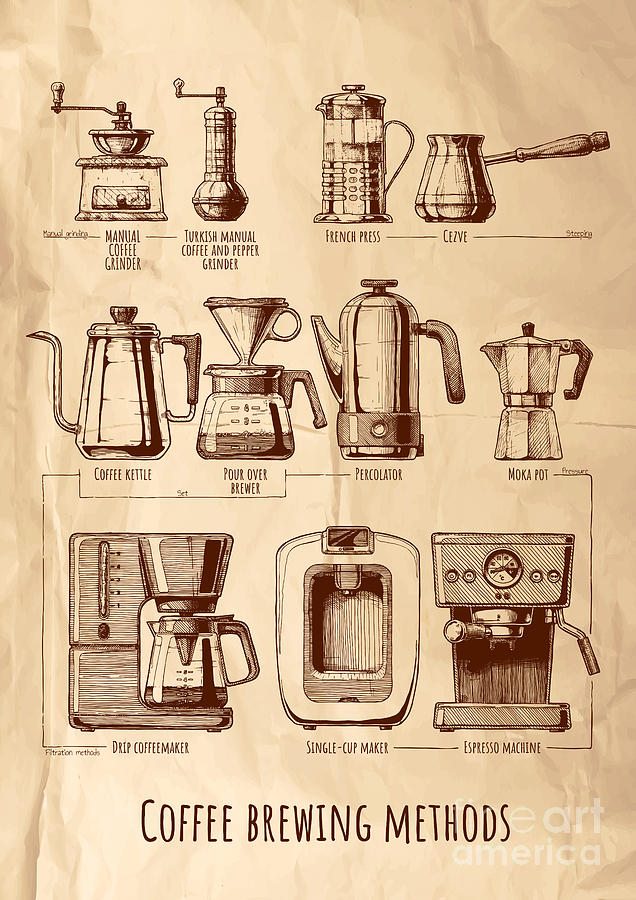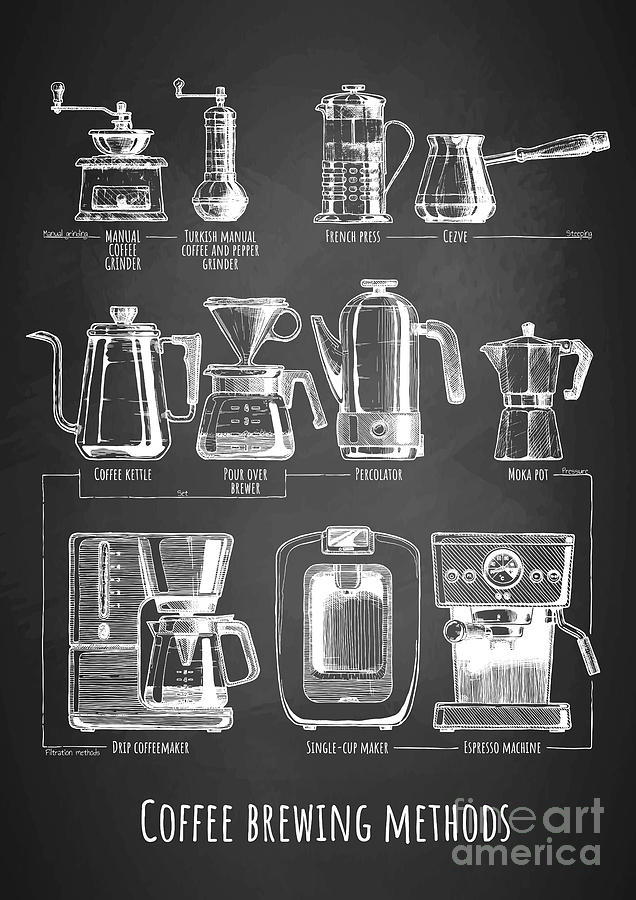A Comprehensive Overview to Numerous Coffee Brewing Methods You Should Try
A Comprehensive Overview to Numerous Coffee Brewing Methods You Should Try
Blog Article
Understanding Various Coffee Developing Methods for a Richer Flavor Experience
A comprehensive understanding of different coffee brewing approaches can exceptionally affect your flavor experience, exposing the detailed nuances of this cherished beverage. As you think about which approach best suits your taste preferences, the question continues to be: how do these approaches influence the last mug, and which might elevate your coffee experience to brand-new elevations?
Drip Coffee Manufacturer
While several coffee fanatics value the nuances of various brewing approaches, the drip coffee manufacturer remains a staple in houses and offices because of its simpleness and effectiveness. This device runs by home heating water and permitting it to stream through coffee premises, drawing out flavors and oils, which after that leak right into a carafe below.
The drip coffee maker is favored for its capability to brew multiple mugs simultaneously, making it suitable for hectic early mornings or gatherings. Users can easily personalize the strength of their coffee by changing the amount of coffee grounds made use of or choosing a brew stamina establishing found in many modern makers. In addition, programmable attributes allow users to establish a timer, ensuring a fresh pot of coffee prepares upon waking.
Maintenance is fairly straightforward, as most drip coffee machine call for regular cleansing to remove mineral build-up. Many designs are likewise furnished with functions such as automobile shut-off, which boosts safety and security and power effectiveness. Ultimately, the drip coffee machine provides a trustworthy and easy to use alternative for those looking for a regular and enjoyable coffee experience without the intricacies of even more elaborate brewing methods.

French Press
The French press supplies a distinct developing experience that contrasts dramatically with the computerized procedure of a drip coffee manufacturer. This guidebook approach enables for an intimate interaction with the coffee-making process, giving individuals greater control over various parameters, such as steeping time, coffee-to-water proportion, and grind dimension.
To make coffee using a French press, coarsely ground coffee beans are steeped in hot water for approximately four mins. This immersion method removes abundant oils and flavors from the coffee, leading to a full-bodied drink that highlights the subtleties of the beans utilized. The steel or nylon mesh filter of the French press permits vital oils to continue to be in the brew, adding to its robust taste account.
When utilizing a French press, it is vital to focus on the developing time and water temperature, as these factors substantially affect the final preference. Trial and error with various coffee selections and steeping periods can result in an individualized taste experience. Generally, the French press is a available and gratifying approach for coffee fanatics seeking to strengthen their gratitude for the complexities of their favored drink.
Pour-Over Strategies
Pour-over techniques boost the coffee brewing experience by permitting exact control over every aspect of the process, from water temperature to putting method. This approach involves by hand pouring warm water over coffee premises in a filter, normally situated in a dripper, which permits optimal removal of tastes.
To begin, picking the right coffee work is crucial; a medium to medium-fine work works best to make sure proper water flow and removal (coffee brewing methods). Next off, water temperature must preferably range between 195 ° F and 205 ° F, as this range draws out the very best flavors without scalding the coffee
The putting technique also plays a vital role. A slow-moving, round motion when saturating the grounds can aid equally extract oils and flavors. It's usually recommended to enable the see page coffee to flower for 30 secs after the first pour, which lets carbon dioxide getaway and boosts flavor development.
Espresso Makers
For those seeking a different yet equally gratifying brewing experience, coffee machines provide a special approach of coffee prep work that stresses stress extraction. This procedure involves forcing hot water through finely-ground coffee at roughly 9 bars of pressure, leading to a concentrated shot of espresso that showcases abundant tastes and scents.

The high quality browse around this web-site of espresso is affected by a number of elements, including work dimension, dose, water temperature, and removal time. Accomplishing the ideal espresso shot needs practice and focus to information. Furthermore, the espresso works as a base for different coffee beverages, such as cappucinos, cappuccinos, and Americanos, making it a versatile option for coffee enthusiasts.

Cold Brew Methods
Cold mixture coffee has gained appeal for its smooth, low-acidity account and rejuvenating taste, making it an ideal selection for warm climate or those sensitive to traditional developing methods - coffee brewing methods. The procedure of chilly brewing typically entails steeping coarsely ground coffee beans in chilly or room temperature level water for an extended duration, usually 12 to 1 day. This technique extracts flavors differently than warm water, resulting in a rich, intricate brew that highlights fruity and chocolatey notes
There are various chilly mixture techniques available, consisting of immersion and drip developing. The immersion method is one of the most straightforward; just incorporate coffee and water in a container, Get More Information let it steep, and after that strain the premises. Conversely, the drip technique makes use of a specialized coffee machine to gradually drip water with coffee premises, permitting for a much more regulated removal process.
Despite the approach picked, the coffee-to-water ratio is important, commonly recommended at 1:4 for a concentrated brew that can be diluted with water or milk before serving (coffee brewing methods). Cold brew can be offered over ice, blended with flavorful syrups, or used as a base for different coffee drinks, supplying convenience and a distinct taste experience
Final Thought
In final thought, checking out various coffee developing approaches substantially enhances the flavor experience. Involving with these varied brewing refines not just boosts recognition for coffee's complexity but additionally encourages individuals to tailor their coffee satisfaction according to personal preferences.
Customers can easily tailor the stamina of their coffee by adjusting the quantity of coffee premises used or picking a mixture strength establishing discovered in many modern equipments. Eventually, the drip coffee maker uses a reputable and user-friendly option for those looking for a constant and pleasurable coffee experience without the intricacies of more elaborate developing methods.
To make coffee using a French press, coarsely ground coffee beans are steeped in warm water for roughly 4 minutes. Alternatively, the drip technique makes use of a specific coffee manufacturer to slowly leak water via coffee grounds, permitting for a more regulated extraction process.
Involving with these diverse brewing refines not just improves appreciation for coffee's intricacy but likewise encourages individuals to tailor their coffee pleasure according to individual preferences.
Report this page